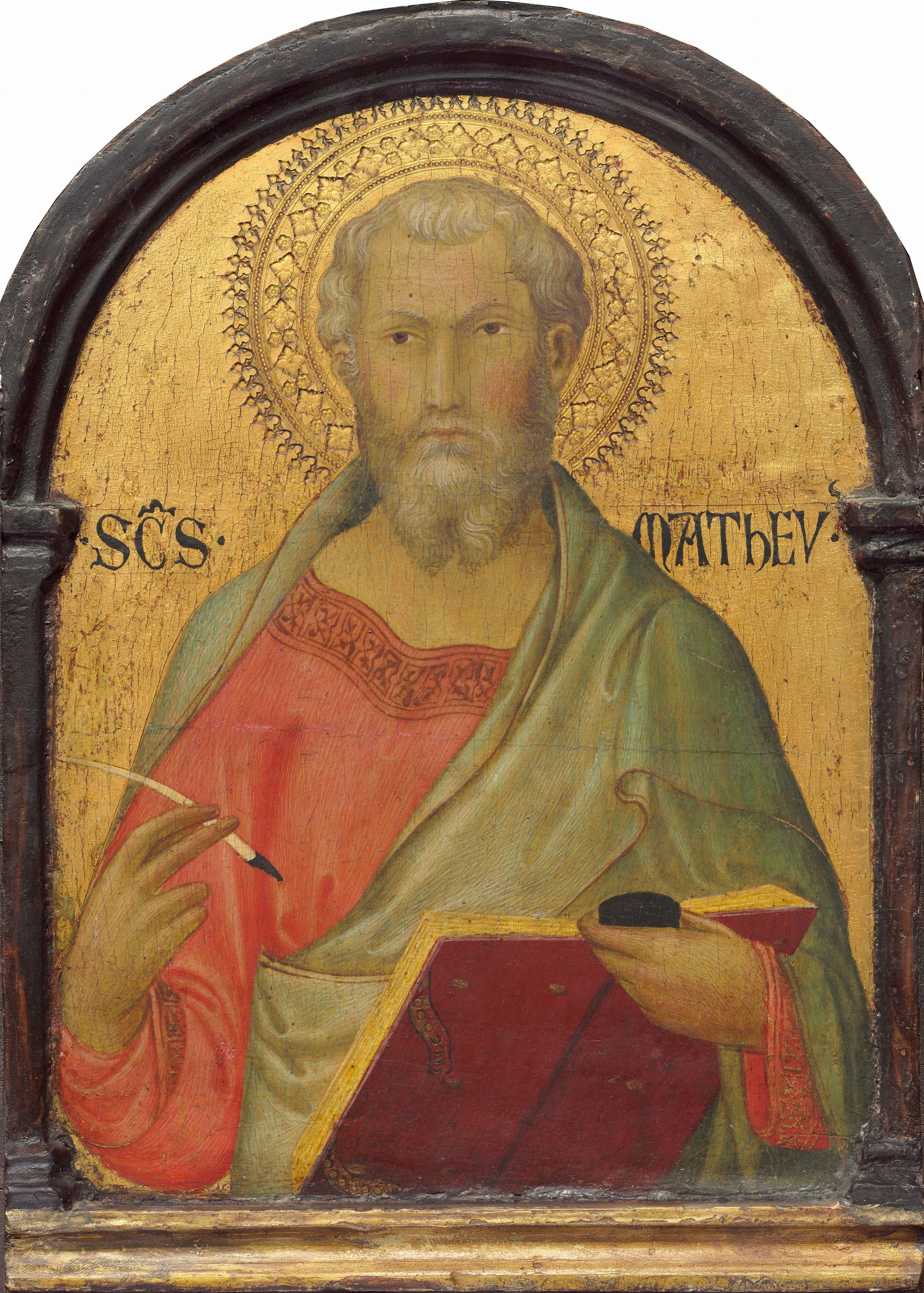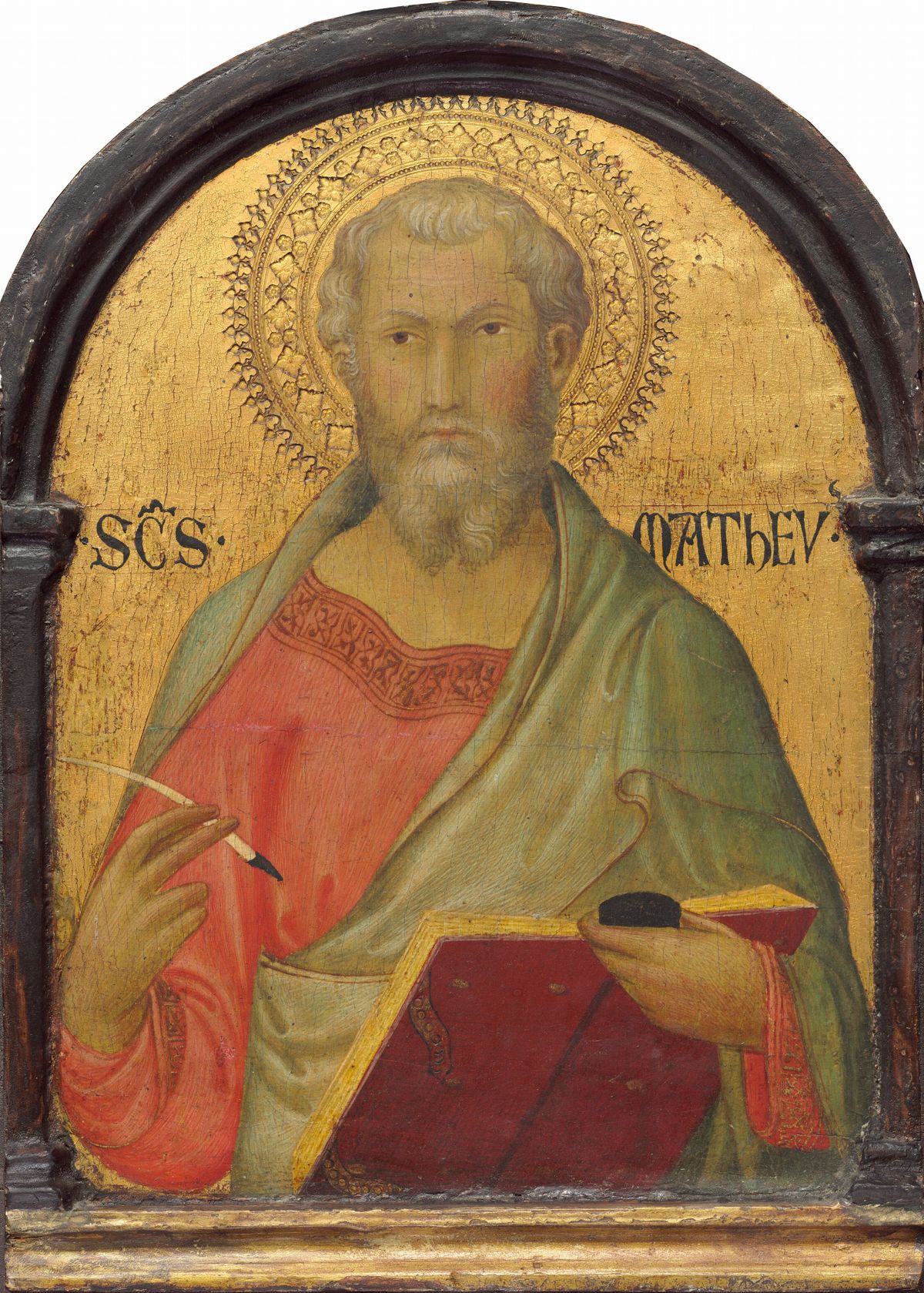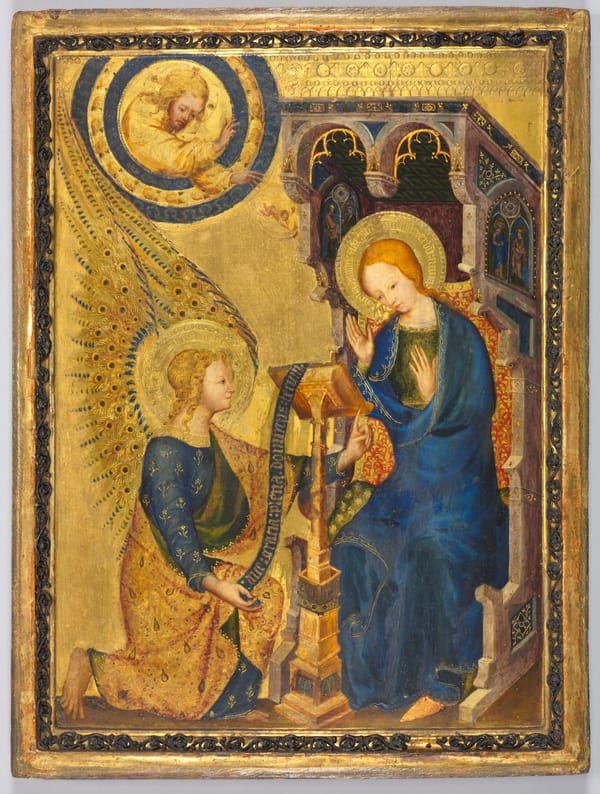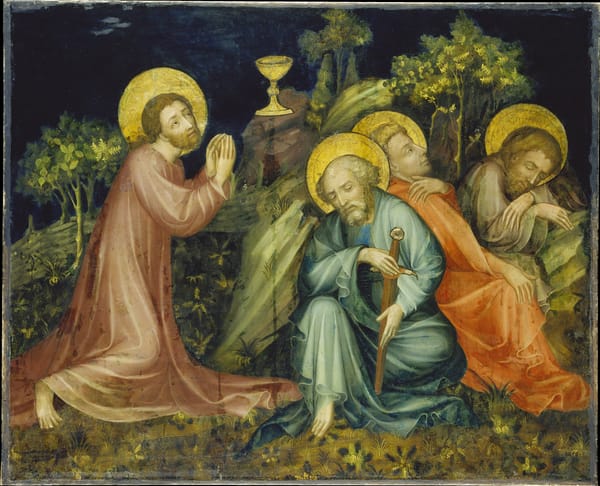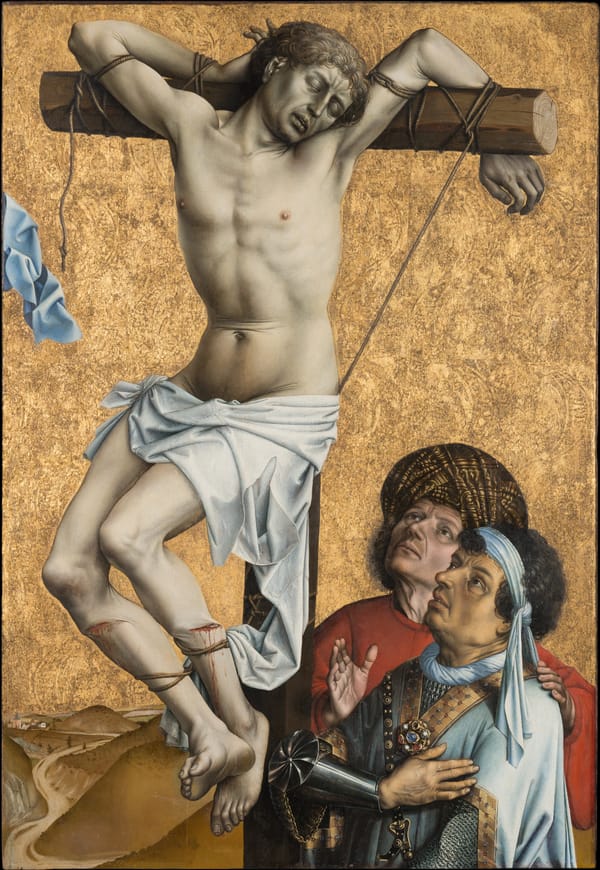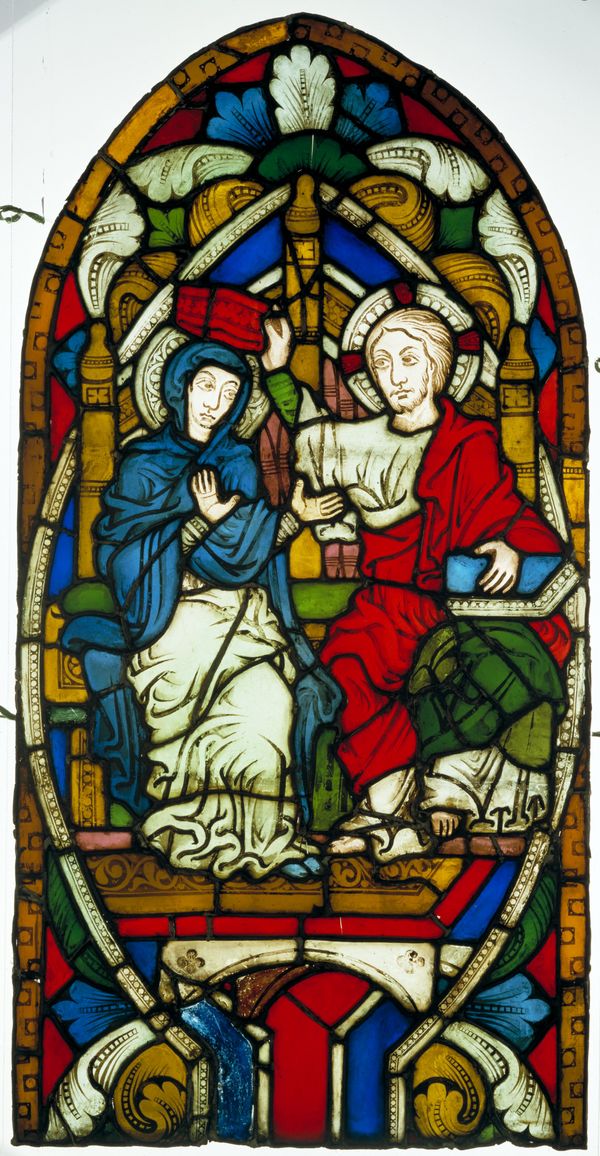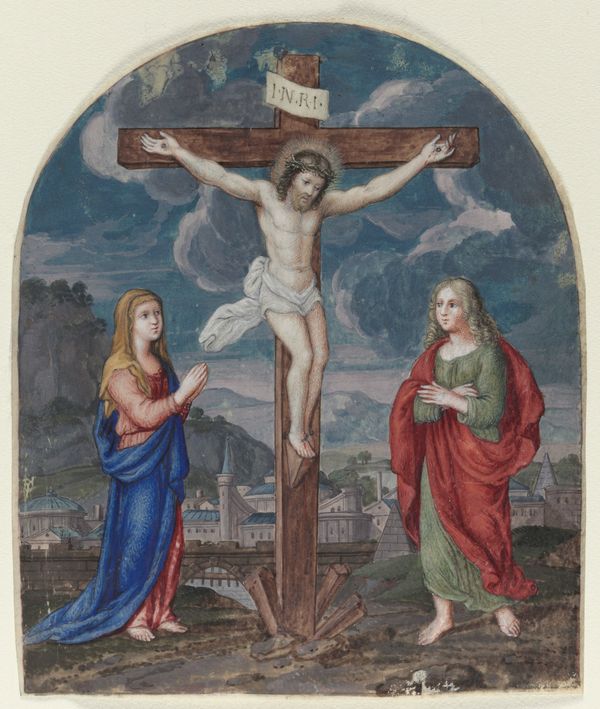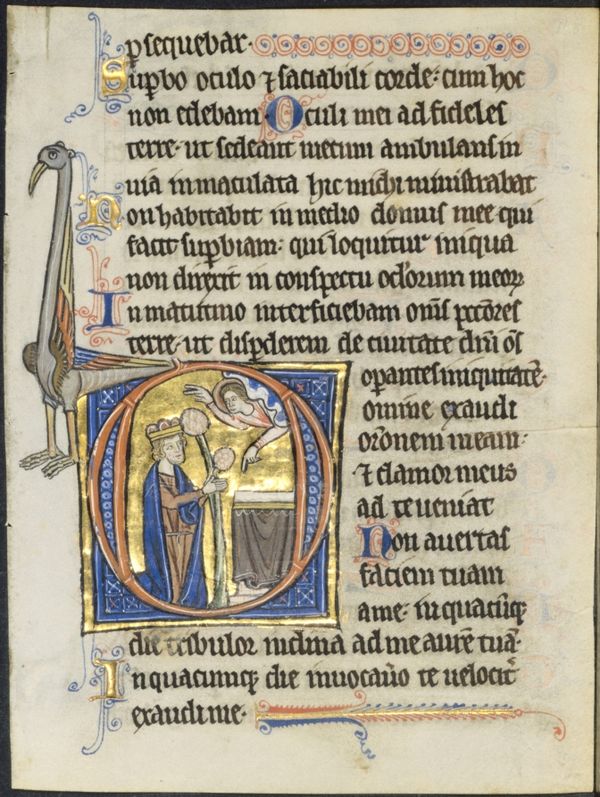Simone Martini depicts Saint Matthew holding a book, quill pen, and inkpot in the process of writing his Gospel. This panel, along with nine others of apostles, including three in the National Gallery of Art’s collection depicting Saint Simon, Saint James Major, and Saint Judas Thaddeus, were once part of the same altarpiece. Together they formed a predella, the low platform at the base of a large central image. (The term is derived from the Italian word for “footstool.”) At just over 10 inches tall, they are the ideal size for that position, and the horizontal wood grain is typical of how artists oriented these small panels for painting.
Simone Martini (Sienese, active from 1315; died 1344) probably trained in Siena with Duccio di Buoninsegna (Sienese, c. 1250/1255 - 1318/1319), and by the time he painted the apostle portraits, he had become one of Europe’s leading artists. Simone’s love of lyrical, fluttering line can be seen in the edges of the saint’s drapery and the neckline of his tunic. Delicate coloration and almond eyes are also marks of Simone’s hand. His reputation earned the patronage of Robert, king of Naples and Anjou, and the pope, then installed in Avignon, in southern France. Through Simone, the brilliant color and rich patterning of Sienese painting met the graceful figures of the French Gothic, a marriage that evolved to become the international style, a refined and courtly manner that dominated all of the arts across Europe at the end of the Middle Ages.
Free Downloads Below
Hi-Res
1200px
800px
